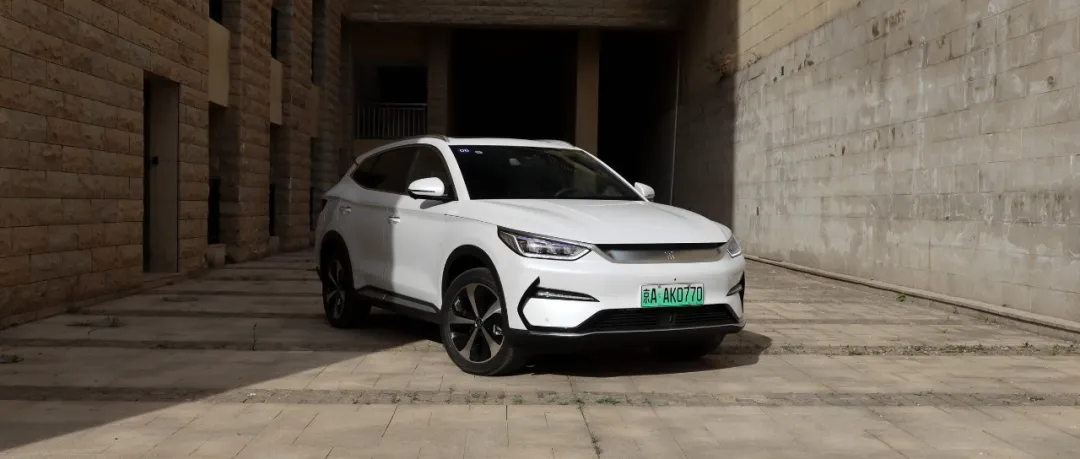*Author: Tian Hui
The electric vehicle market presents a dumbbell shape, with high-end market represented by Chinese-branded cars like HAN EV selling well, and low-end market continuously popular with Hongguang MINI EV. However, there are few car manufacturers that can sell large quantities of products in the 100,000-200,000 RMB market, which is where consumers mostly buy.
In the process of upgrading consumption, SUVs have replaced sedans as the first choice of family consumers. However, various car manufacturers have not been able to launch a product that can meet consumer demands in terms of endurance, space, appearance and other aspects at a price point under 200,000 RMB.
For car makers, there is also a feeling of being “wronged.” Due to cost constraints, it is difficult for car makers to create a pure electric SUV under 200,000 RMB that is a jack-of-all-trades in space, power, appearance, and endurance.
BYD’s new model, Song PLUS EV, may have the ability to be a jack-of-all-trades.
The length of the Song PLUS EV is over 4.7 meters, with a wheelbase of 2765 millimeters, and the interior space ranks at the forefront of the same level of models. With a power level of 135 kW and 505 kilometers of theoretical endurance, it can satisfy consumers. In terms of intelligence, the Song PLUS EV has L2 level intelligent assisted driving functions such as ACC adaptive cruise control and LKS active lane keeping.
The Song PLUS EV, which is striving to be a jack-of-all-trades, does indeed have good theoretical performance, and looks quite competitive in the electric SUV market under 200,000 RMB. What is the comprehensive strength and driving experience of this car?
With this question, Electric Vehicle Observer conducted a test drive of the Song PLUS EV in the spring breeze of Beijing.
HANTENG design style
After the DragonFace design language was introduced, every new car launched by BYD no longer “fights alone,” and a unified family style has been formed in terms of appearance, including the Song PLUS EV.
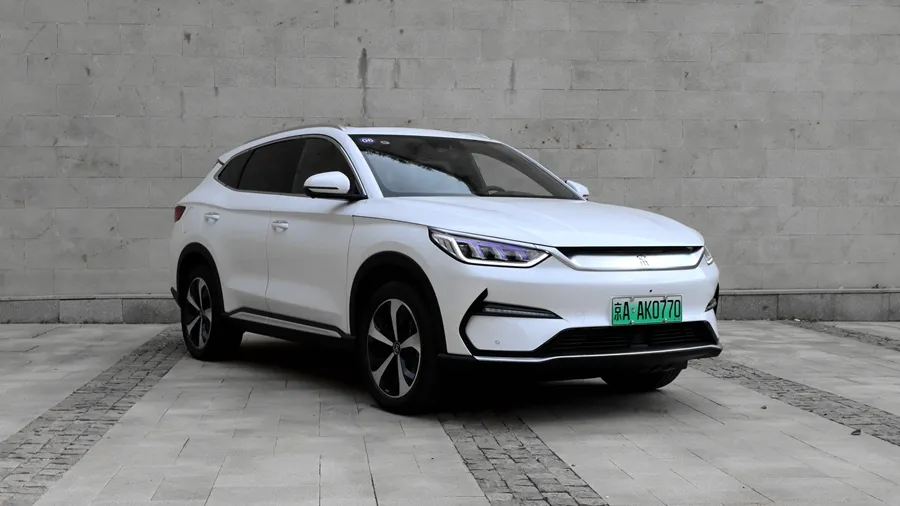
The Song PLUS EV uses DragonFace3.0 pure electric vehicle family design, with the air intake grille on the front completely enclosed, and a through-type chrome decoration strip. This design style is inherited from BYD’s flagship vehicle, the HAN EV.
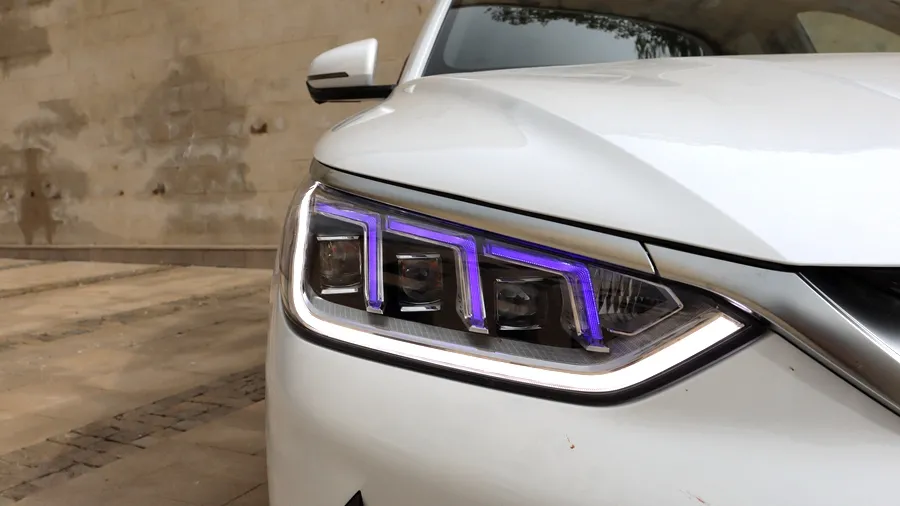
Unlike the HAN EV, the Song PLUS EV’s daytime running lights inherit the ice blue daytime running light design first used by the TANG EV, and the overall “777” shape of the headlight group is inspired by dragon claws.
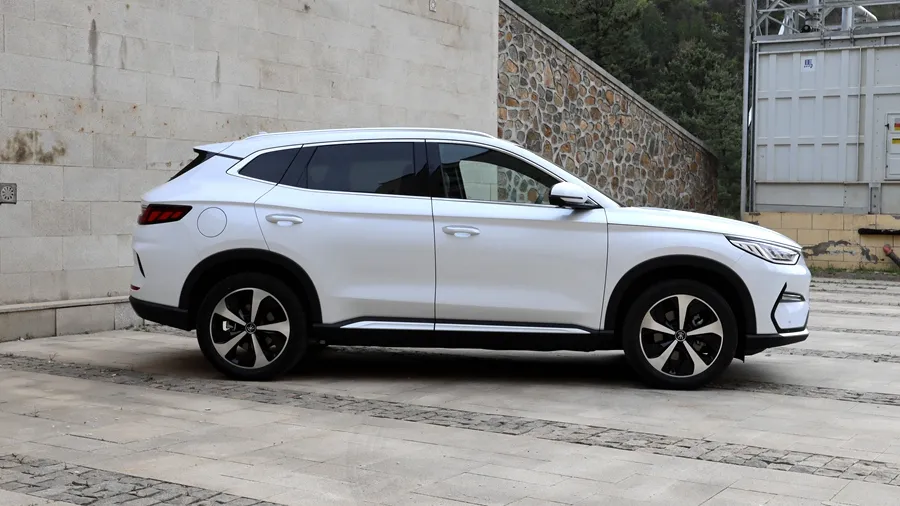
On the side of the body, the visual experience of the Song PLUS EV tends towards sportiness, with the angle of the D-pillar greatly enhancing the sense of movement. The entire waistline vaguely resembles the appearance of the Han EV, especially the waistline on the side of the engine compartment, which is identical to that of the Han EV.
It is worth mentioning that the black decorative strip at the D-pillar position continues the mark of the old Song model.

At the rear part of the car, the Song PLUS EV has a good sense of hierarchy, with the combination of delicate chrome decoration and through-type taillights enhancing the recognition.
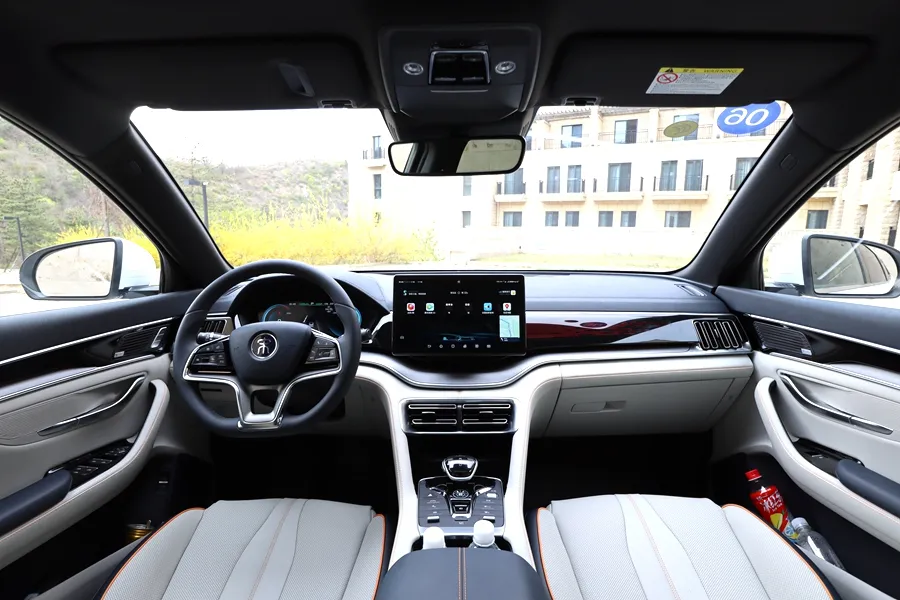
Similar to the appearance, the interior design style of the Song PLUS EV continues the Chinese luxury concept of the BYD Han Tang series. The interior is in the color scheme of eclipse blue and sky gray, which is the first launch model in the BYD series, even ahead of the light-colored interior version of the BYD Han EV.
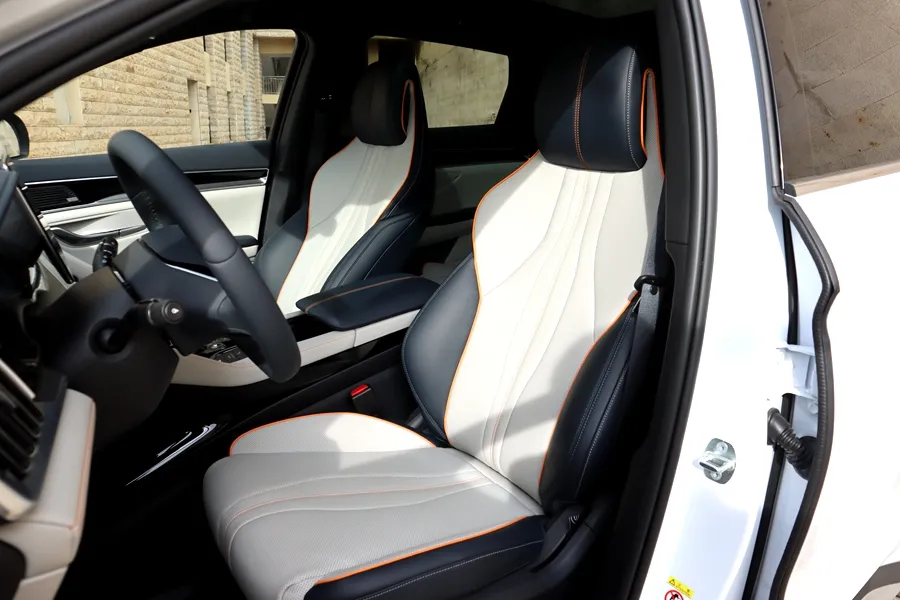
The front seats of the Song PLUS EV are equipped with one-piece headrest seats and decorated with orange stitching, which gives a visual sense of sportiness while providing a comfortable experience.
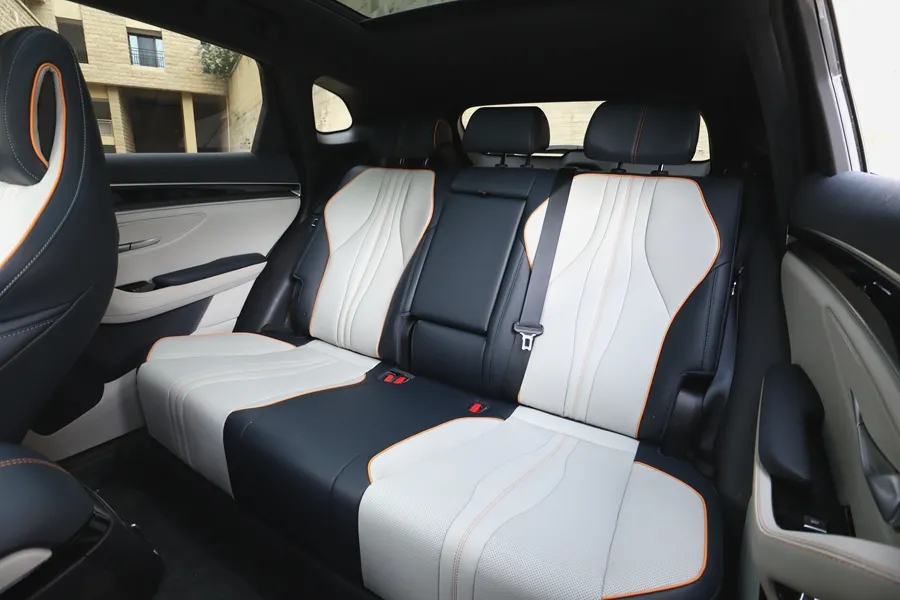
The rear seats still adopt the traditional split headrest design, and the seat design conforms to ergonomics. The seat cushion feels soft, and the backrest of the seat can support up to 11 angles adjustment. During long-distance travel, the backrest can be lowered to a semi-reclining position to enhance the riding experience.
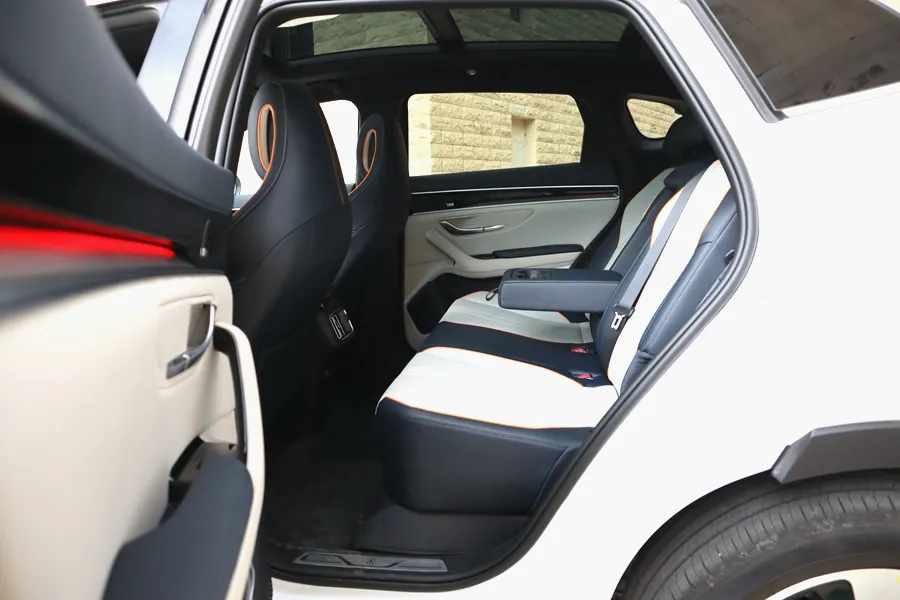
Thanks to the 2765mm long wheelbase, the longitudinal space of the rear passengers of the Song PLUS EV is spacious, and the rear floor is in a flat design. Therefore, even if three people sit in the back, the middle passenger can have a comfortable seating posture.
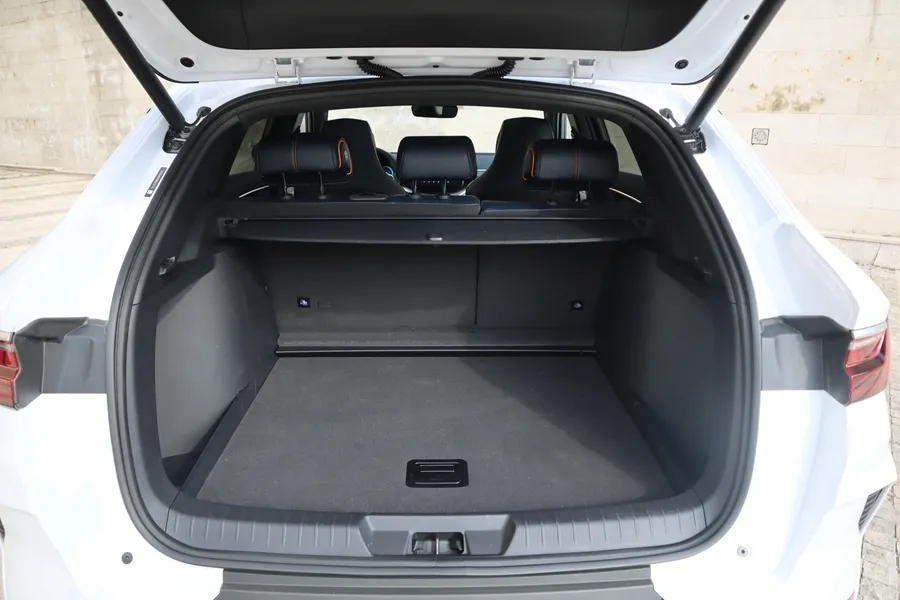 The trunk space of the Song PLUS EV is somewhat outstanding, with rich functions, including anchor points and lighting, and the trunk cover can also be placed in a double layer.
The trunk space of the Song PLUS EV is somewhat outstanding, with rich functions, including anchor points and lighting, and the trunk cover can also be placed in a double layer.
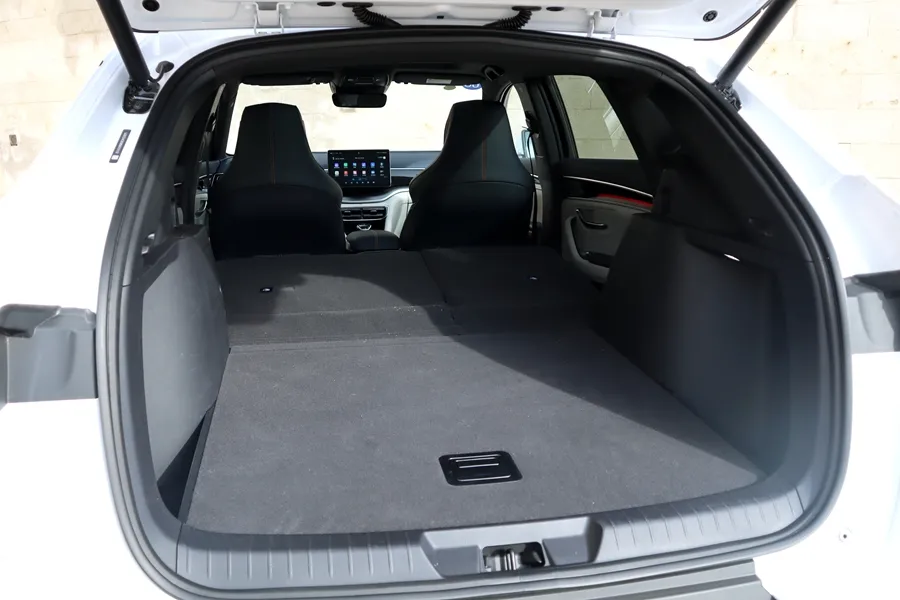
By placing the trunk cover on the upper layer and folding down the rear seats, the entire trunk space can be expanded to a full flat space with a depth of more than 1.8 meters, sufficient to support two adults sleeping side by side.
In terms of appearance, interior design, and space performance, the Song PLUS EV is more sporty in style and has a larger space performance among the competing models in the same class such as the GAC Aion V, XPENG G3, and the WEY EX5.
Continuing with rich configurations
BYD has never disappointed consumers in terms of configuration, and the Song PLUS EV is no exception.
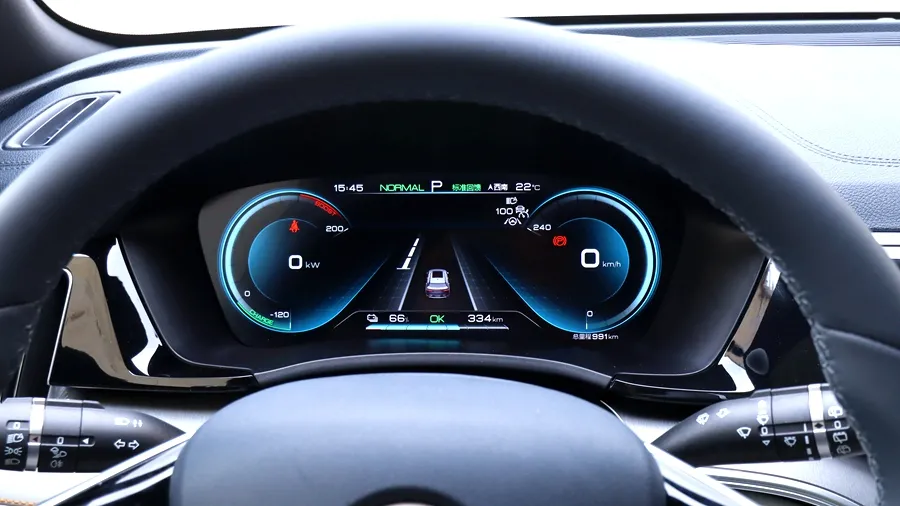
In terms of the electric configuration of the entire vehicle, the Song PLUS EV uses a 12.3-inch full LCD instrument panel with high display clarity, UI improvement, and rich display content. Unfortunately, this high-clarity screen does not support high-end intelligent driving assistance functions such as AR scene navigation.
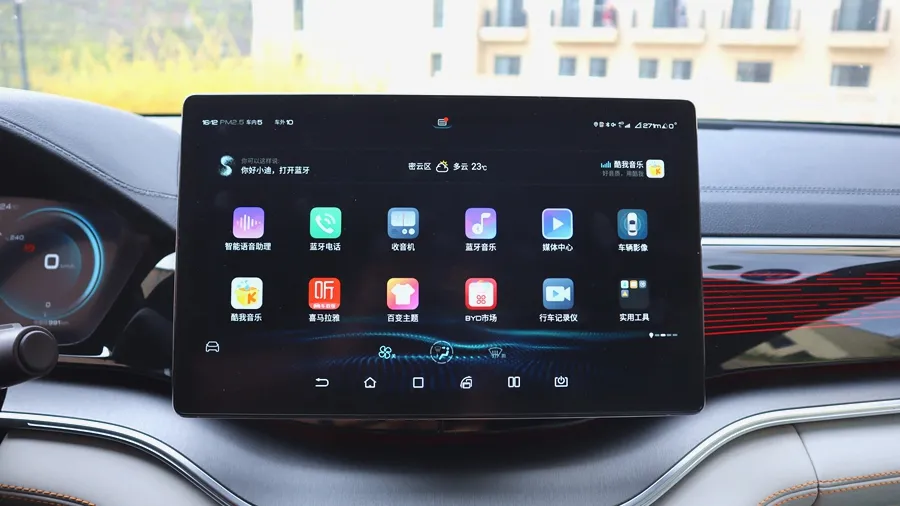
The entertainment central control screen is still the BYD family’s rotating screen design, and the entertainment system is upgraded to DiLink3.0 smart network system. The surprising thing is that the DiLink3.0 system of the Song PLUS EV has upgraded the computing chip to the Qualcomm Snapdragon 665 processor, and the GPU has been upgraded to Adreno 610, greatly improving system fluency.
In terms of software adaptation, DiLink3.0 has a rich set of pre-installed applications, supporting Himalaya, Gaode Maps, and other daily-use APPs. At the same time, DiLink3.0 also supports the application store and can download Android APPs from third-party application stores through the browser.
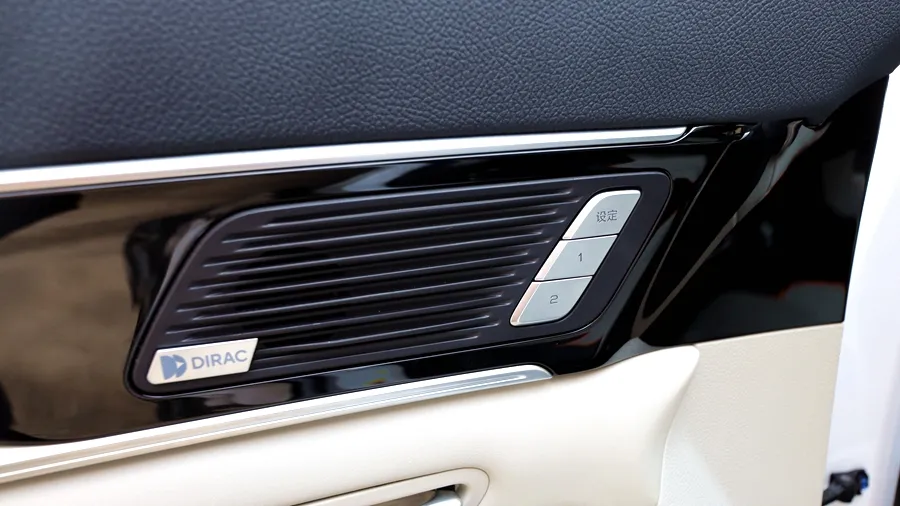
In terms of seat configuration, both the driver and front passenger seats of the Song PLUS EV support 8-way electric adjustment and ventilation heating function. Whether you are in the north or the south, you can ensure that the seats are warm in winter and cool in summer. The driver’s seat also supports two sets of seat memory functions.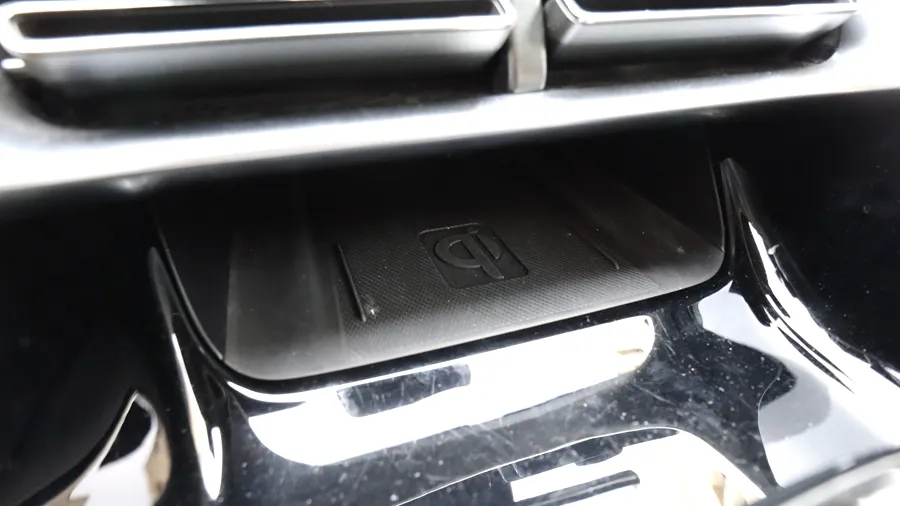
As smartphones become more prevalent with wireless charging capabilities, cars are also following suit and starting to support wireless charging. The wireless charging panel for the Song PLUS EV phone is located in front of the gear lever and comes with a non-slip pad, but the response time of the wireless charging slow plate is slightly slow when in use. It takes about 2 seconds for the phone to start charging after being placed on it, for unknown reasons.
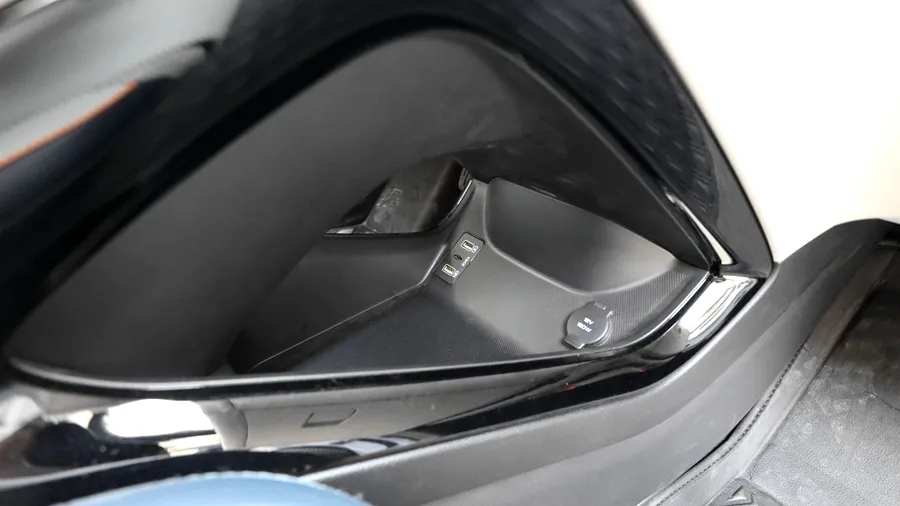
The Song PLUS EV still retains traditional USB ports, with two front USB ports located in the storage compartment below the gear lever.
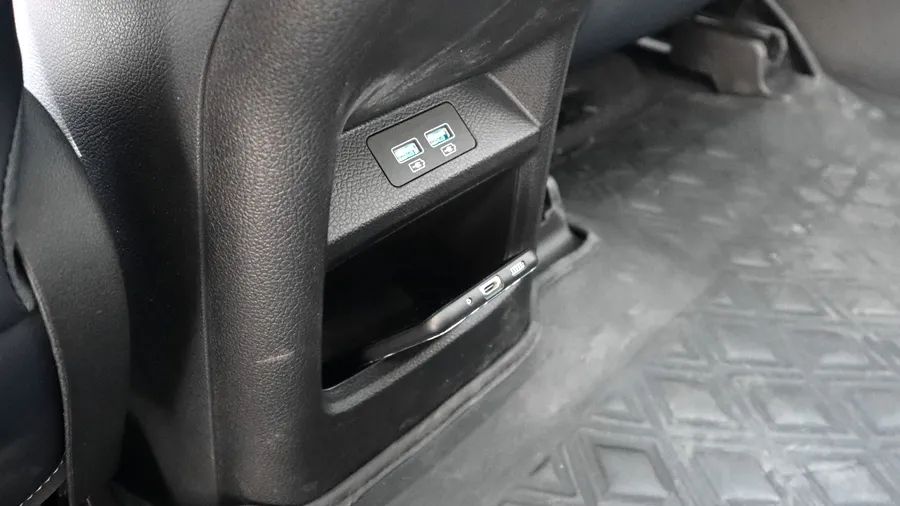
There are a total of 2 USB ports for rear passengers, located below the air conditioning vent in the back row. Together with the storage compartment design, phones have a safe place to be placed, avoiding safety hazards during the driving process.
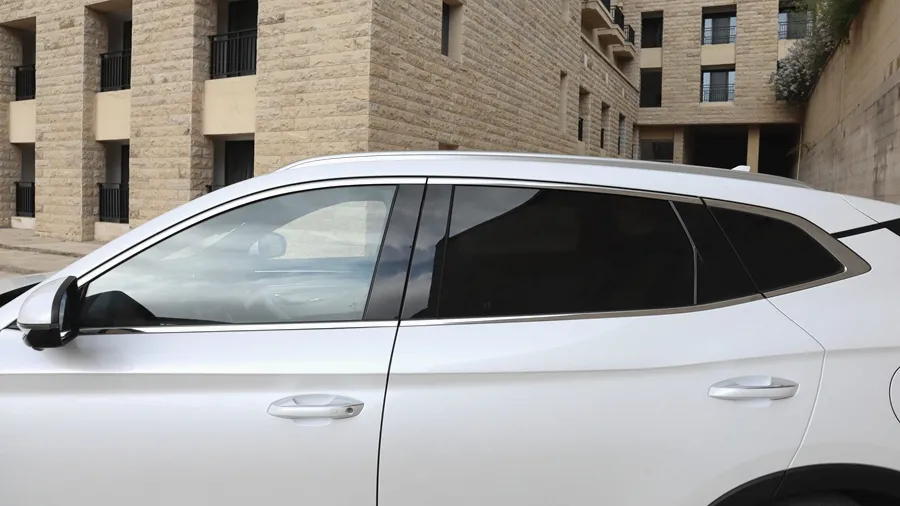
The Song PLUS EV uses privacy glass in the rear, which has good insulation and privacy protection functions even without a film.

Although not standard across the board, the electric tailgate is only available in the high-end models, but it can be retrofitted through the BYD official APP.
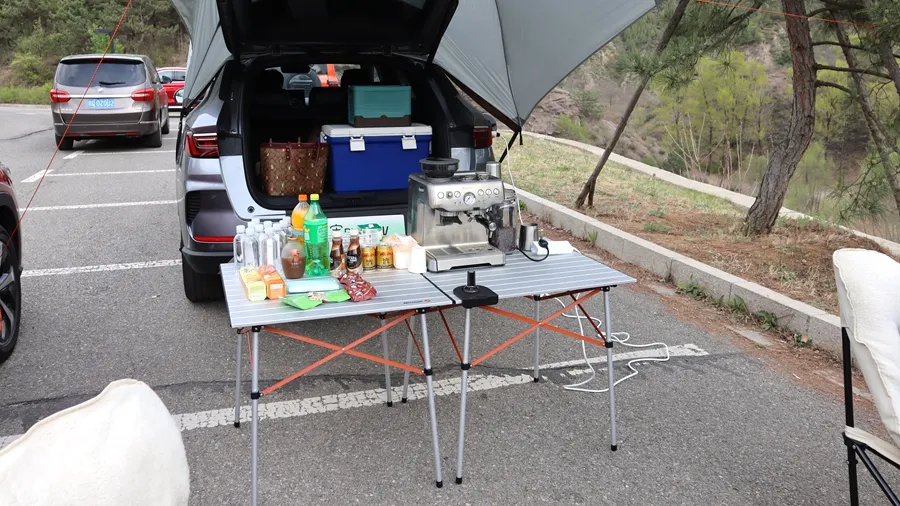
VTOL 220V mobile power station function, as a key function of BYD, is equipped as standard on the Song PLUS EV.
BYD has never been stingy with basic car configurations, which is a blessing for consumers. The rich configuration is an important reason that BYD can self-produce most of the components and have a cost advantage in cost control.
Adequate Driver Assistance Features
The intelligent driver assistance functions of the Song PLUS EV are relatively rich, supporting ACC adaptive cruise control, LKS active lane keeping system, AEB automatic emergency braking system, and HMA intelligent high and low beam of advanced intelligent driving assistance functions.
On the hardware level, the Song PLUS EV is equipped with three millimeter-wave radars, six high-definition cameras, and eight ultrasonic radars.
In practical experience, the ACC adaptive cruise control function of the Song PLUS EV is more usable and can be activated at speeds above 30 km/h, and supports brake stop function. When encountering frequent traffic conditions, the Song PLUS EV can follow the preceding vehicle to start and stop by itself, which can greatly relieve the driver’s fatigue.
The active lane keeping function of the Song PLUS EV has a good performance when dealing with national standard highways. But due to the limitations of the narrow field of view camera, the practicality of the active lane keeping function is not high in urban road conditions.
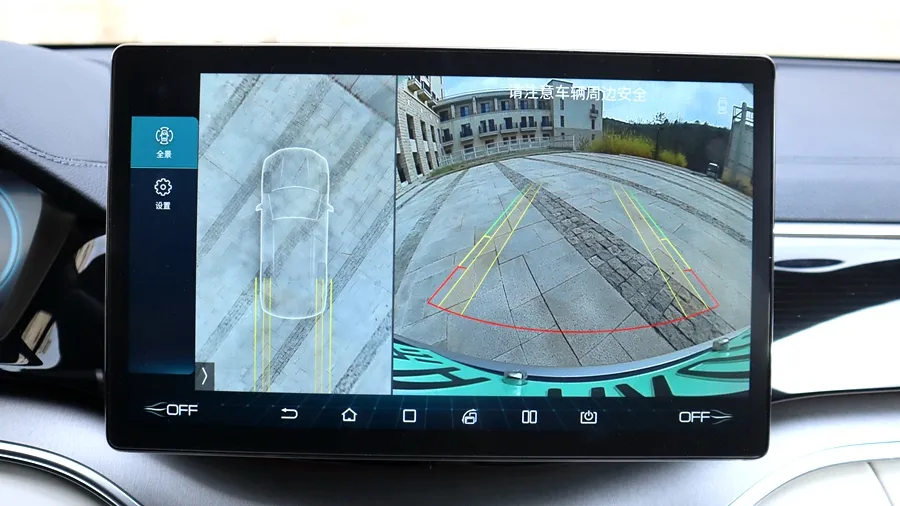
It is worth mentioning that the 360-degree imaging function of the Song PLUS EV has a good performance, with clear picture clarity and clear lane marking, and supports transparent vehicle function. In special road conditions, the transparent vehicle can better help drivers avoid obstacles.
Unfortunately, the Song PLUS EV does not support automatic parking function. Although the automatic parking function of competitors in the same class is not good, whether it is good or not, it should first meet the consumer’s demand for whether it exists or not. Hope that the Song PLUS EV can add this function in the next year’s model.
Driving experience is not aggressive
Different from the sporty appearance, the driving experience of the Song PLUS EV tends to be comfortable for household use.
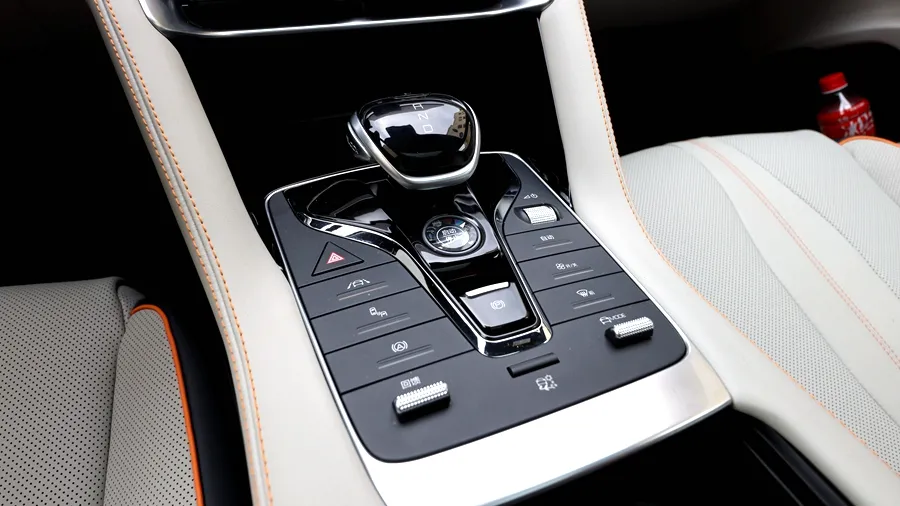
The Song PLUS EV has three driving modes – ECO, Normal, and Sport – and supports two energy feedback strengths – standard and large.
The three driving modes and two energy feedback strengths enable drivers to freely choose the driving experience they want.
The front-mounted 135 kW permanent magnet synchronous motor can output a maximum torque of 280 N.m at startup. When the Sport mode is activated, the pushing sensation at startup is more direct.
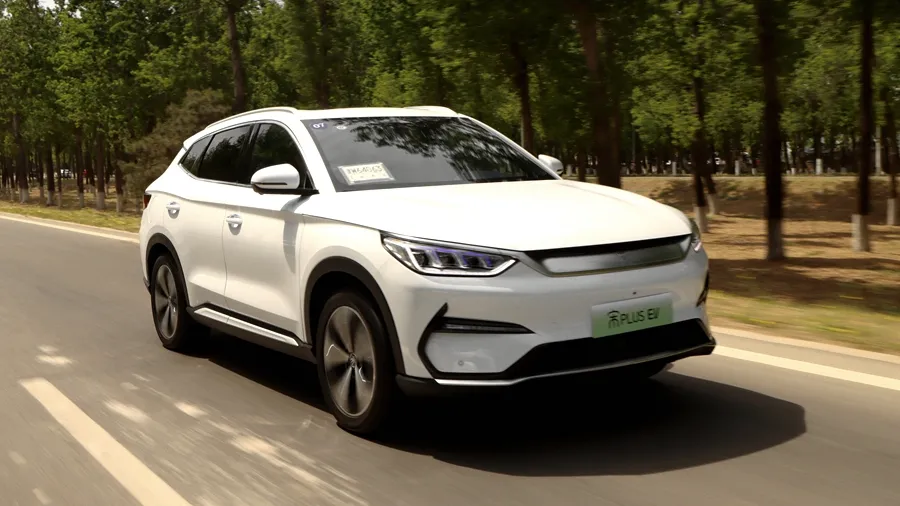 Due to the fact that the test drive took place on public roads, there was no aggressive driving. On urban and suburban roads, as well as highways, the Song PLUS provides the driver with a relatively agile driving experience, with good lateral support when turning.
Due to the fact that the test drive took place on public roads, there was no aggressive driving. On urban and suburban roads, as well as highways, the Song PLUS provides the driver with a relatively agile driving experience, with good lateral support when turning.
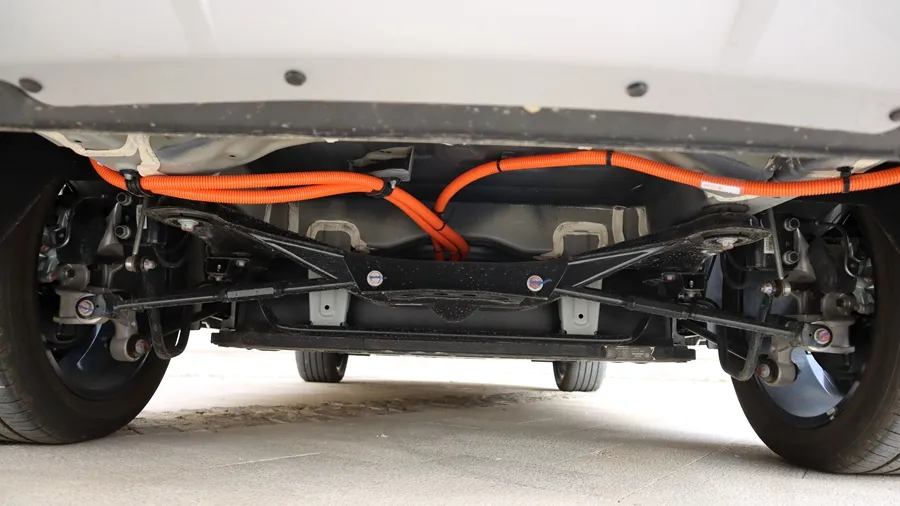
With front MacPherson struts and rear multi-link suspension, which is a superior configuration compared to the commonly used rear torsion beam structure in the same class. The rear multi-link suspension also enhances the comfort of the Song PLUS EV’s backseat passengers, with minimal lean during sharp turns.
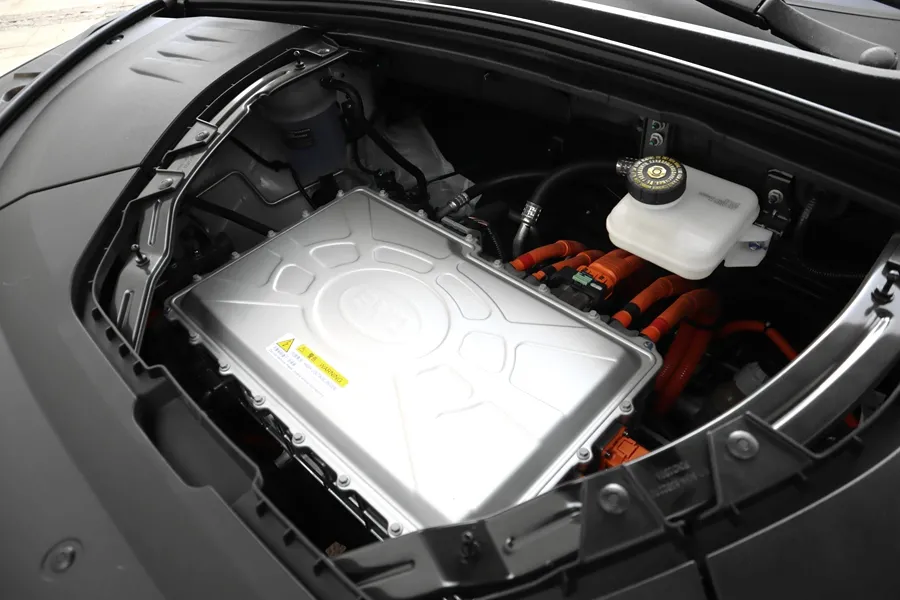
The Song PLUS EV uses a 71.7 kWh blade battery pack with an energy density of 140 Wh/kg, and is equipped with liquid cooling and battery heating functions.
The performance parameters of the blade battery are not outstanding, but in terms of safety, it is relatively excellent among different types of power batteries and can pass the cell piercing test.
Overall, the Song PLUS EV is a cost-effective product, with significant advantages in space, power, and configuration among its competitive models in the same class. The intelligent driving assistant functions are satisfactory, and the hardware configuration is even leading.
For safety-conscious family consumers, blade batteries are safer than the commonly used ternary lithium power batteries in competitive models.
The Song PLUS EV is a highly competitive product, but it is only available for purchase on BYD’s e-commerce platform. Due to the limited availability of e-commerce dealers, we need to wait and see if the highly competitive Song PLUS EV can become another hot-selling product after the Han EV.
This article is a translation by ChatGPT of a Chinese report from 42HOW. If you have any questions about it, please email bd@42how.com.
